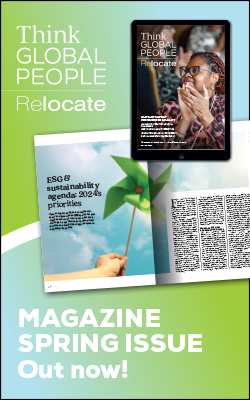ONS report highlights UK 'productivity puzzle'
The conundrum of growing output but stuttering productivity across most sectors of the UK economy has been highlighted by the latest data from the Office for National Statistics (ONS).

Services sector boosts figures
Indeed, despite growing levels of activity, productivity in the manufacturing sector in Q3 actually fell by 0.2 per cent. Only the all-important services sector, which accounts for more than three-quarters of UK GDP, boosted the overall figure by increasing productivity by 0.3 per cent in the quarter, despite a poor performance by financial services.With productivity growth remaining below levels seen before the financial crisis, Richard Heys, deputy chief economist at the ONS, commented, “These estimates of productivity show that while labour productivity is improving, particularly in the services sector, it is still weak compared to that experienced in the recent past, both in terms of the level of productivity and the rate of growth.”The figures were published a day after Andy Haldane, chief economist at the Bank of England, warned that the lack of productivity was a “fundamental” problem for the UK economy, with a “fat tail” of businesses failing to boost levels.Related articles:
Services provide further boost to UK economy
UK manufacturing begins 2017 with a 'fizz' in orders
UK growth on the rise as auto sector booms
There are also fears that Brexit could further dent efforts to boost productivity. Howard Archer, chief UK and Europe economist at IHS Markit, said, “A major risk is that prolonged uncertainty and concerns over the UK’s economic outlook ends up weighing down markedly on business investment and damages productivity.“This could be compounded if foreign companies markedly reduce their investment in the UK and this dilutes any beneficial spill-over of skills and knowledge.”
Productivity refuses to pick up
Mariano Mamertino, economist at the global job site Indeed, added, “The addition of another set of confusing jigsaw pieces has made Britain’s productivity puzzle harder to solve than ever. Despite the labour market’s resilience, productivity simply refuses to pick up in any meaningful way and continues to confound expectations.“Britain’s stubbornly low wage growth had given early clues that productivity was likely to struggle, and the post-referendum uncertainty was never going to help.“While the full impact of the Brexit vote has yet to be felt, the UK labour market remains in far better health than most economists would have predicted even a few months ago. But such disappointing levels of productivity growth belie the economy’s apparent robustness and pose a serious threat to wage growth prospects.“Productivity is the ultimate driver of both wages and living standards – so with inflation set to creep up steadily this year, increasing numbers of workers now risk seeing their wages fall in real terms. “With economists warning of ‘a decade of lost wage growth’, the prospect of Britons seeing both their earning and buying power shrink is a chilling one.“But productivity is not just an arcane economic concept argued over by academics – it’s a vital measure of the economy’s health. And on this latest reading, British productivity is deeply unwell.“The UK’s productivity continues to lag far behind that of other major economies. But hurt national pride aside, this is above all a clear indication that despite the short-term resilience, warning signs are on the horizon.”Disappointing figures
Ian Brinkley, acting chief economist at the CIPD, the professional body for HR and people development, commented, “These are disappointing figures overall, with little sign that the persistent under-performance on productivity is coming to an end. Many organisations will be unable to offer higher wages as a result, meaning significant numbers of workers will feel poorer in 2017 if inflation continues to rise as anticipated.“There may be more room for pay rises in some sectors. For example, productivity per hour is rising more strongly in some low pay industries, such as wholesale, retail and hospitality than in the rest of the service sector, which may reflect the impact of the National Living Wage. “The government’s productivity plan must correct a serious omission in the lack of significant new investment to support adult skills training and development if it is to address the underlying reasons for poor productivity growth.”For related news and features, visit our Enterprise section.
Access hundreds of global services and suppliers in our Online Directory
 Get access to our free Global Mobility Toolkit
Get access to our free Global Mobility Toolkit 
©2024 Re:locate magazine, published by Profile Locations, Spray Hill, Hastings Road, Lamberhurst, Kent TN3 8JB. All rights reserved. This publication (or any part thereof) may not be reproduced in any form without the prior written permission of Profile Locations. Profile Locations accepts no liability for the accuracy of the contents or any opinions expressed herein.




























